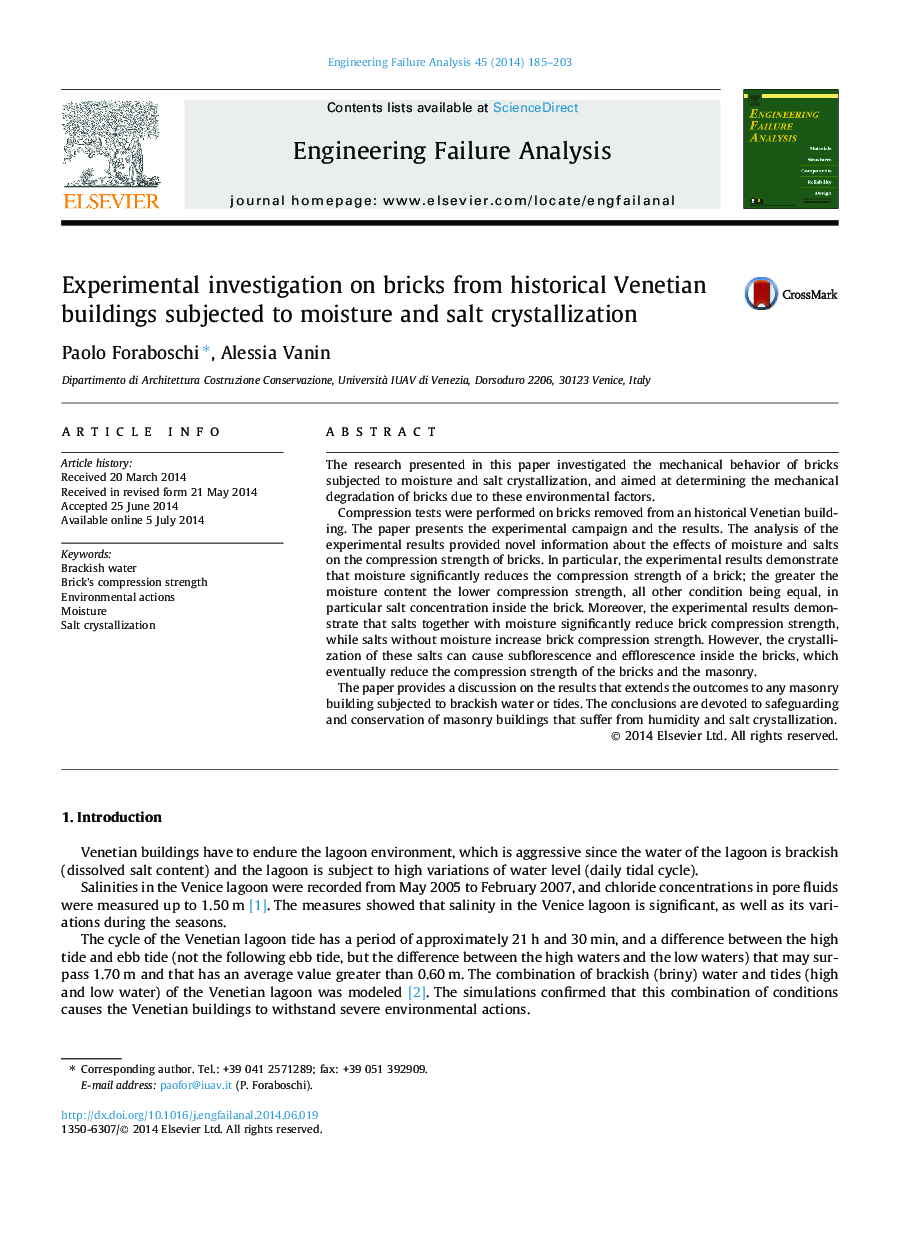| کد مقاله | کد نشریه | سال انتشار | مقاله انگلیسی | نسخه تمام متن |
|---|---|---|---|---|
| 769608 | 1462979 | 2014 | 19 صفحه PDF | دانلود رایگان |
• Compression tests on Venetian bricks in all the possible environmental conditions.
• Effects of moisture content and salt concentration on brick compression strength.
• Trapped water and salts strongly affect the brick compression strength.
• Removal of both trapped water and salts drastically increases compression strength.
• Results hold true for any masonry subjected to moisture and salt crystallization.
The research presented in this paper investigated the mechanical behavior of bricks subjected to moisture and salt crystallization, and aimed at determining the mechanical degradation of bricks due to these environmental factors.Compression tests were performed on bricks removed from an historical Venetian building. The paper presents the experimental campaign and the results. The analysis of the experimental results provided novel information about the effects of moisture and salts on the compression strength of bricks. In particular, the experimental results demonstrate that moisture significantly reduces the compression strength of a brick; the greater the moisture content the lower compression strength, all other condition being equal, in particular salt concentration inside the brick. Moreover, the experimental results demonstrate that salts together with moisture significantly reduce brick compression strength, while salts without moisture increase brick compression strength. However, the crystallization of these salts can cause subflorescence and efflorescence inside the bricks, which eventually reduce the compression strength of the bricks and the masonry.The paper provides a discussion on the results that extends the outcomes to any masonry building subjected to brackish water or tides. The conclusions are devoted to safeguarding and conservation of masonry buildings that suffer from humidity and salt crystallization.
Figure optionsDownload as PowerPoint slide
Journal: Engineering Failure Analysis - Volume 45, October 2014, Pages 185–203
